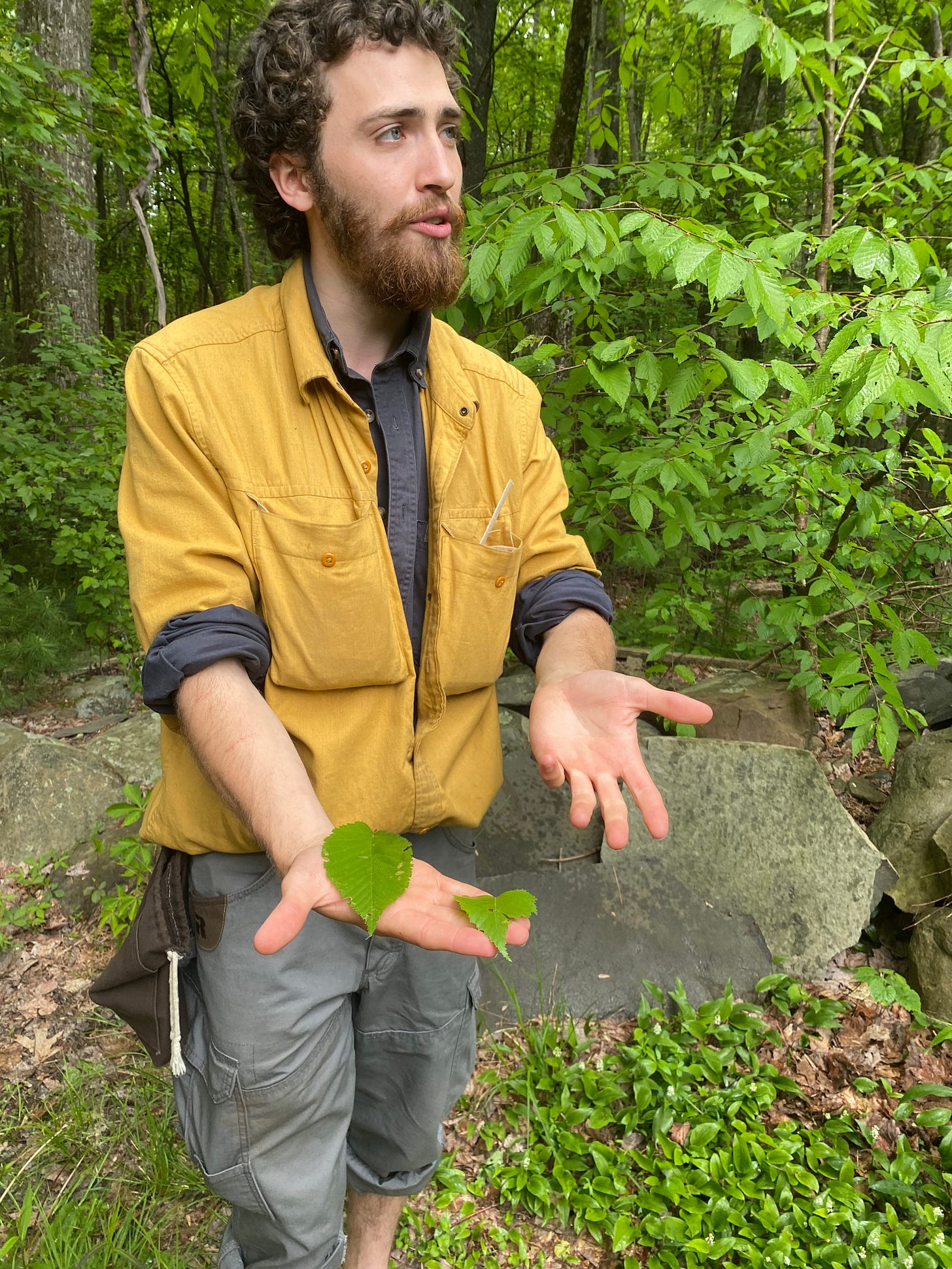How many times have you said if you only had another hour or two in the day to finish up a project, or sit down with a good book, take a hike with your kids, or your dogs, or just get some extra shut-eye?
I know that’s a mantra for me in the fall for sure as garden chores pile up as the daylight winds down. As I wrote in the last newsletter (check it out new subscribers) that “secret sauce” TIME is just something we can’t get over.
And now it’s the beginning of June. A little bit of my “May Mania” has subsided. But just a little. I’m still hardening off plants and transitioning them to their spot in the arboretum for the season or their forever home. There are still many trays of leftover straggling seedlings to tuck into different garden beds. Plus all the spring flowering plants are ready for a prune, or as has become very fashionable in the garden world “The Chelsea Chop”. But the best and most rewarding part is harvesting veg like asparagus, peas, spinach, lettuce, herbs, and early fruits!!


Lonicera caerulea (Honeyberry) is finally beginning to get noticed more by gardeners who are interested in growing fruits that are low maintenance. Plant breeders see a market of untapped potential for this arctic berry which depending on the species and variety is hardy to zone 3 and with some types even zone 2!! Honeyberry isn’t a new fruit and is only now getting the attention it deserves. I just wish plant marketers wouldn’t say it’s like a blocky Blueberry. I mean I guess it looks like a beefed-up Blueberry that got squashed. Its taste however is more sweetly-sour than a Blueberry, and the acidity of the berry gives it a sweet-tangy flavor all its own. Well, I guess since everybody knows what a Blueberry is, this is a “soft opening” to familiarizing yourself with something new. Learn more about this fruit in our book- ‘Cold-Hardy Fruits and Nuts’.
There’s still room in our next class about growing your own “Backyard Vineyard”.
J. Stephen Casscles is teaching this class at the arboretum on Saturday, June 8th from 11:00-12:30pm. We encourage anyone in the Hudson Valley who is growing grapes, or interested in cultivating them to join us for this informative talk.


At Hortus we discovered a very low-tech, easy, and affordable way of protecting our grapes for both diseases and predators…
This short video was taken 9/13/23
Last year we had a great grape harvest, but sadly the timing was such that we had to go out of town for a speaking engagement and couldn’t eat or process all of the grapes before leaving the next day, so we ended up freezing the harvest.
It wasn’t until March when we actually had the time to actually go through the process of making jam.
On Father’s Day we are pleased to have back at the arboretum, Levi O’Brien, who is an arborist/garden consultant, an expert on all things tree and wood-related , and, above all, an educator. He is on faculty at the New York Botanical Garden, a Graduate student at SUNY ESF studying Forest Pathology, and a green woodworker.
Levi has offered many identification classes at the arboretum over the last several years, and each time is different! Come prepared to be overwhelmed with knowledge, and leave with a sense of awe at how many clues there are to read trees! This special class is a great Father’s Day gift and we are offering a discount if you bring your DAD! This two hour class starts at 11am.
SAVE THE DATE the 4th Annual “Art in the Garden Event” is July 13th (rain date 7/14). This year we will be featuring the work of Alison McNulty.
Her sculpture will be on display at the arboretum for the entire season. Check out the website to see all the “pop-up” artist who will be there as well.
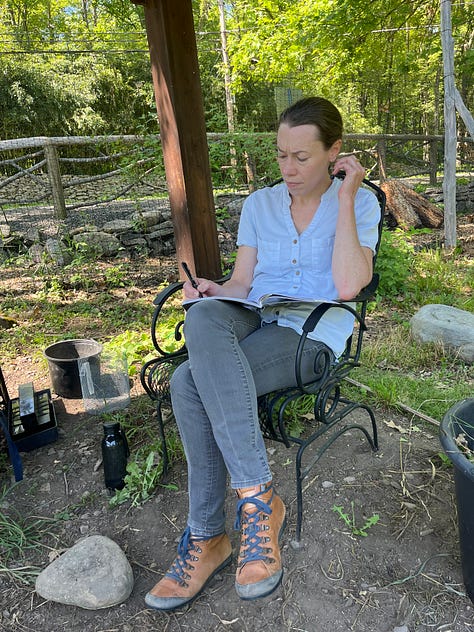
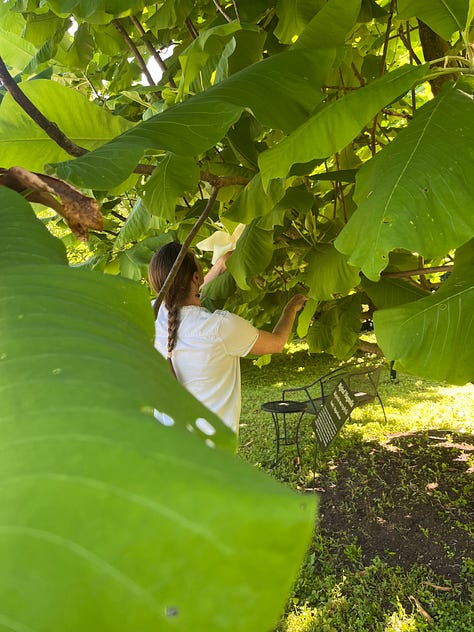

Without your support we would not be able to host these talented artists for the day. Contact us to become an art sponsor!
SAVE THE DATE: for few more artsy workshops at the garden!
Eco-printing with Bonnee Pecquex and Renee Baumann are taking place on 8/24 & 9/22 + 9/29 (respectively).
These two artists will be offering a pop-up at our “Art in the Garden Event” this year as well.
If you live in the Hudson Valley then you know this has been the season of the caterpillars. The Midwest may have the double broods of Cicadas happening now, but they do not have the massive explosion of the Spongy Moth (Lymantria dispar, formerly gypsy moth) caterpillars! They are everywhere, eating away at the upper canopies of trees, with their favorites being Oak, Walnuts, Quince, and Birch trees to name a few but really we are seeing them just about everywhere!
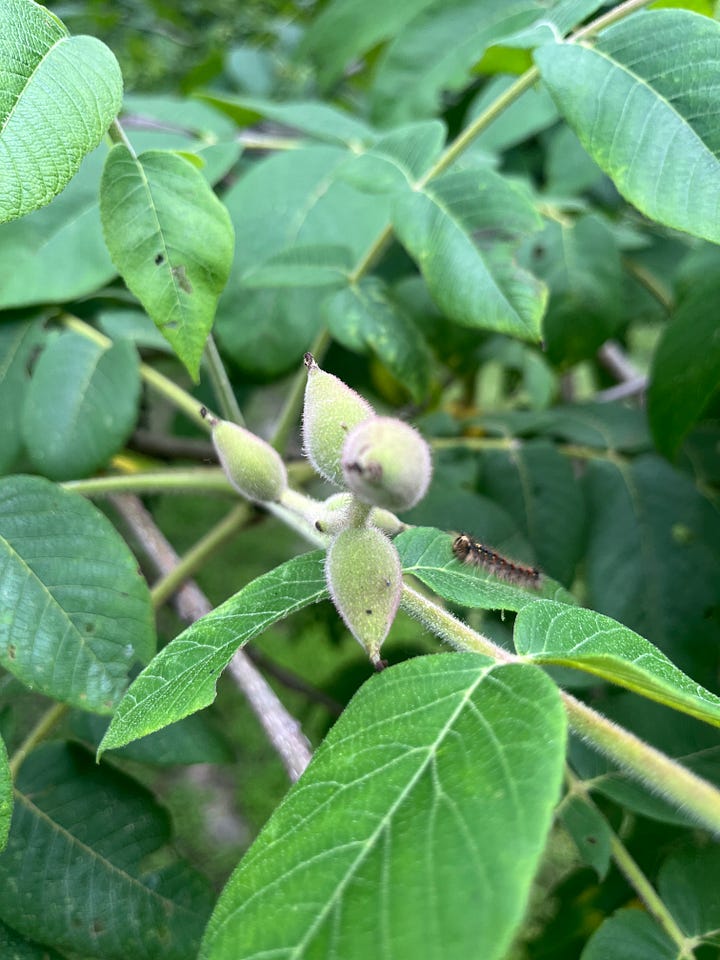
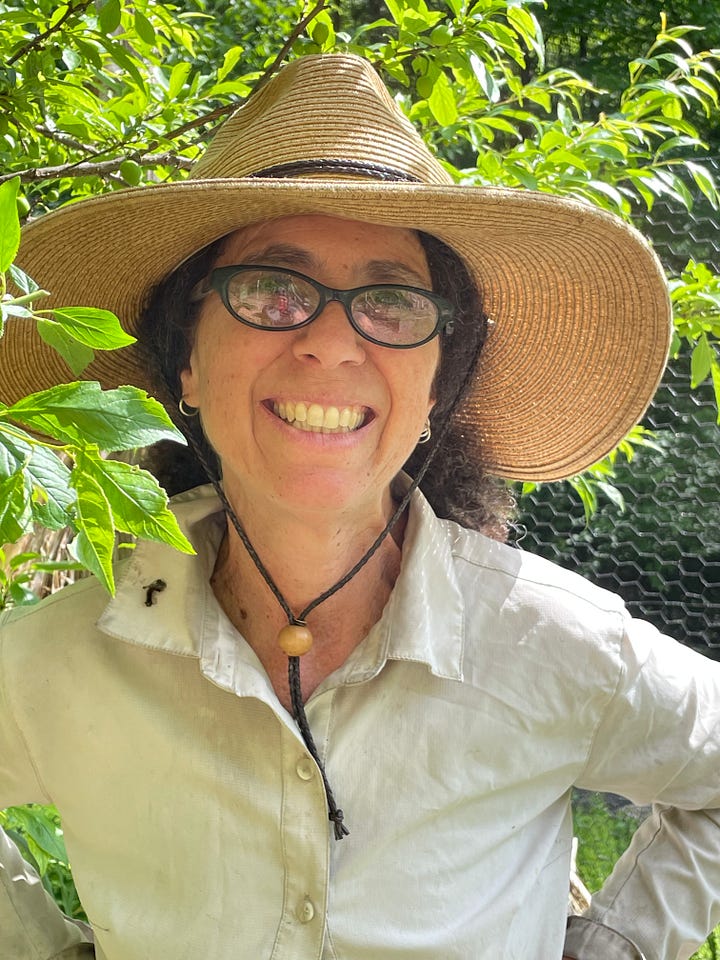
The caterpillars are going through their instar stages and are getting quite big. Here are some good resources for how to deal with the next several stages of their lifecycle. The Times Union has a great article about the history of them, and different strategies to deal with them. It’s good to remember that for the most part these pests have been here for more than 150 years!
But as I said previously it is the year of the caterpillars and we are also having a massive outbreak of Geometers, which we non-entomologists lump into the caterpillar category but they they are really inchworms aka loopers.
Read more about them here.
The main difference between inchworms and caterpillars is that inchworms have only two or three pairs of prolegs near their posterior ends, and they move by anchoring with their thoracic legs and bringing their prolegs forward, just behind their thoracic legs, forming an arch in the middle of their bodies. Like a circus contortionist.
The short video below shows that behavior.
And just in case that doesn’t get the point across check out this short video I took recently at the outhouse…Predominantly loopers, but some Spongy’s are in there too!
Most articles, posts and information focus on all the beneficial pollinators, and for good reason. People in general have an aversion to insects, and may even refer to them as pests. There’s a statistic out there that says there is over a billion insects for every person!!
As I’ve mentioned in a previous Substack post, 75% of all our food depends on insects pollinating flowers.
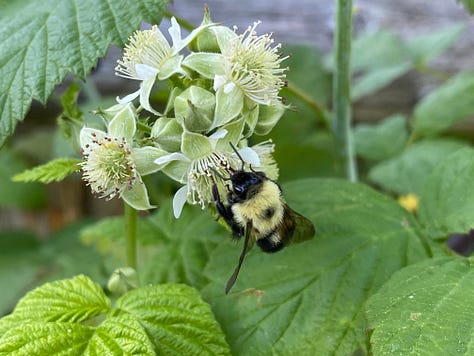

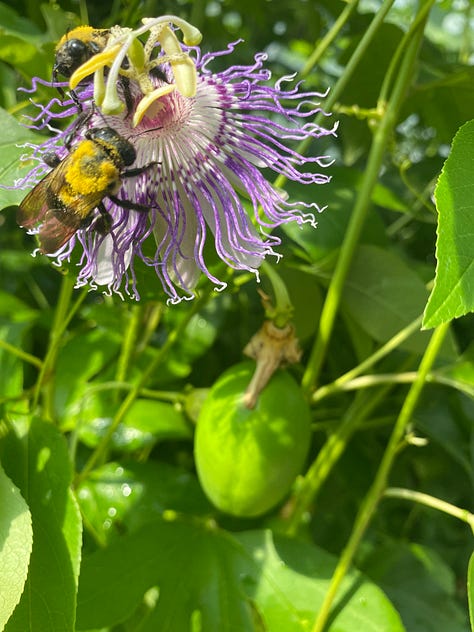


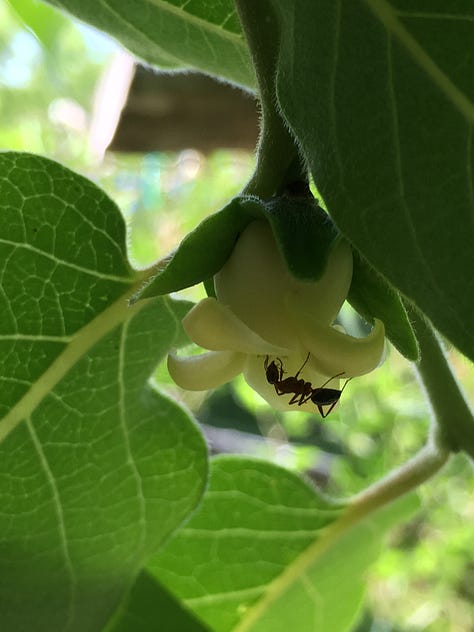
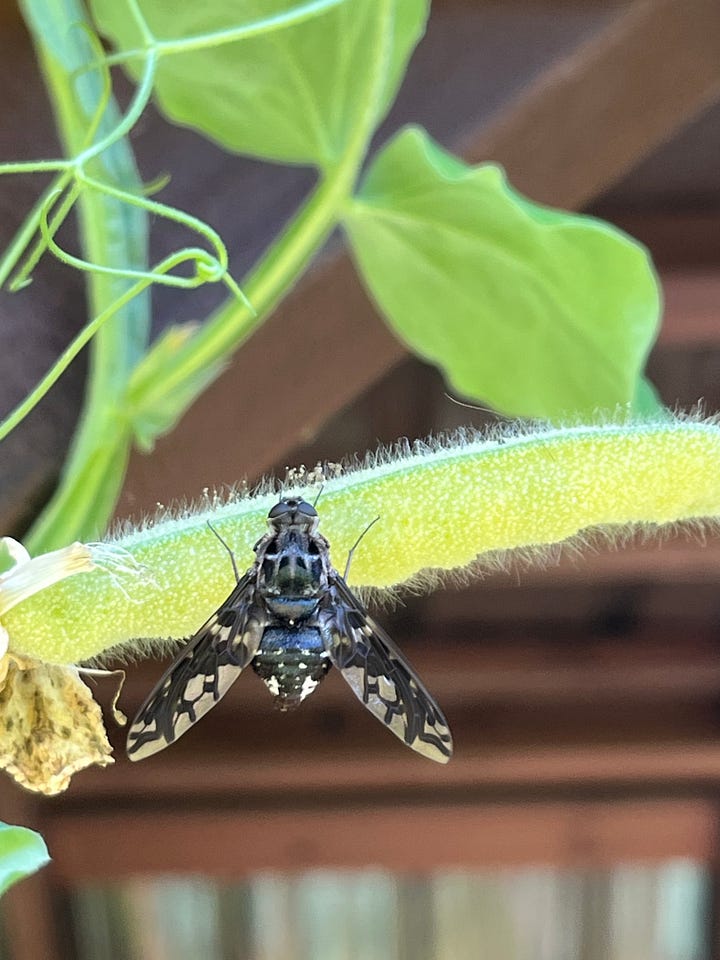

Generally when we think of beneficial insects we think of these lovelies..

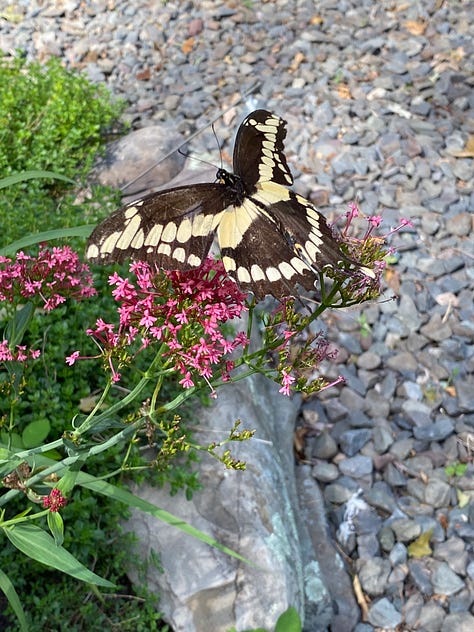

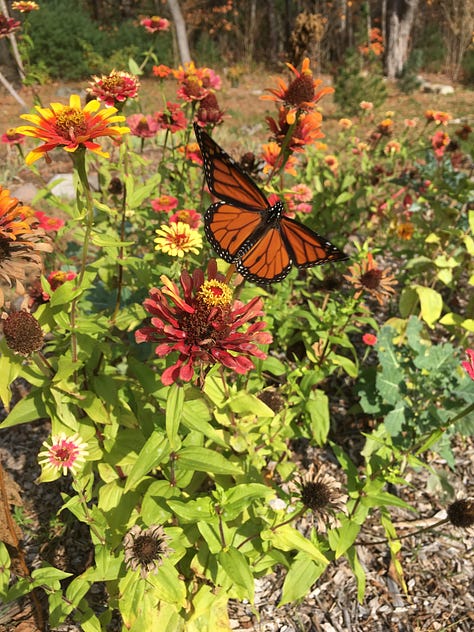
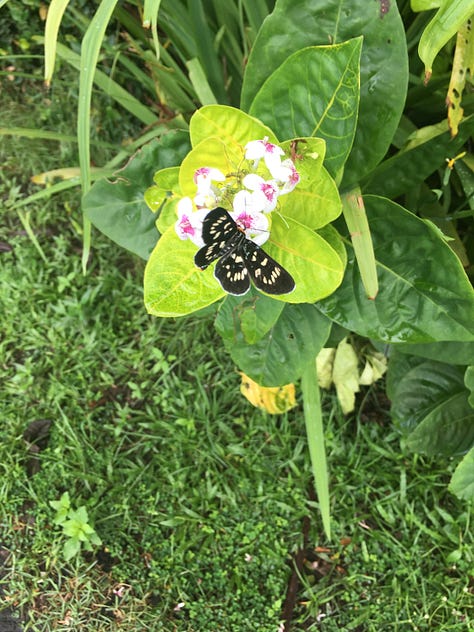
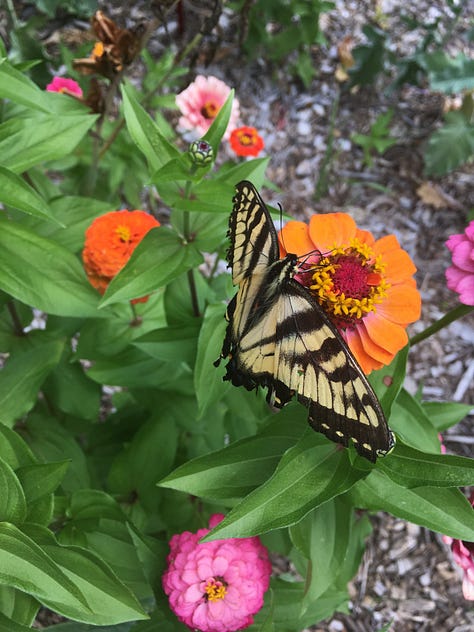
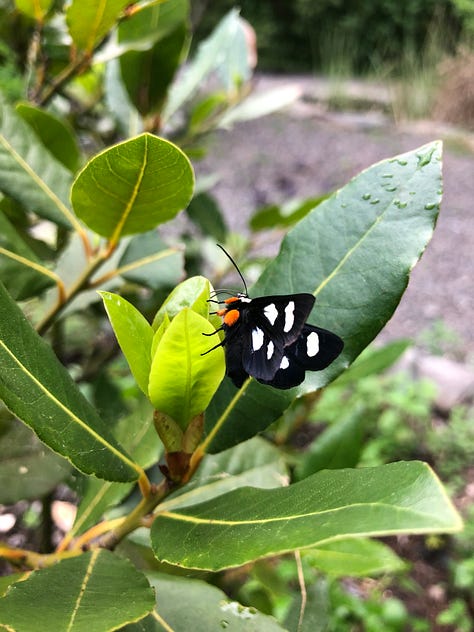


However there are so many insects that get categorized as bad, like the aforementioned Spongy Moth for sure, Ticks, and Mosquitoes. The latter being the poster child/insect for BAD because they cause terrible disease like Zika, Dengue, West Nile and Malaria. Luckily these diseases are not generally found in the temperate world. But they exist.
Malaria is a disease caused by a parasite which is spread to humans through the bites of infected female mosquitoes. The females need the blood in order to produce eggs. Both adult male and female Mosquitos feed on nectar to survive. So interestingly enough the vast majority of them are flying around pollinating for us.
I had no idea until I listen to the most interesting podcast by the Xerxes society.
Another fascinating Xerxes podcast was one on light pollution, oh wait…they don’t use the term pollution, because insects have evolved over thousands of years without light. Entomologists like the acronym ALAN or artificial light at night.
I live in a rural setting in the countryside, and I’d say since the invention of solar lights and the ubiquitous string party LED lights, everybody has extra lighting around their homes and properties. I know this because we walk the dogs at night and there are stretches of my road that are as bright as if I was in a big city. People don’t realize that 60% of our pollinating insects are nocturnal. These lights are detrimental to them. I’m not advocating for getting rid of all outdoor lighting, but to switch to motion-detector lights. Listen to this podcast, it will cast some “light” onto how to have a better nocturnal ecosystem.
Taken May 22, 2024 at 9:18pm. Just about full moon. Thats about as much light as the nightlife can handle.




